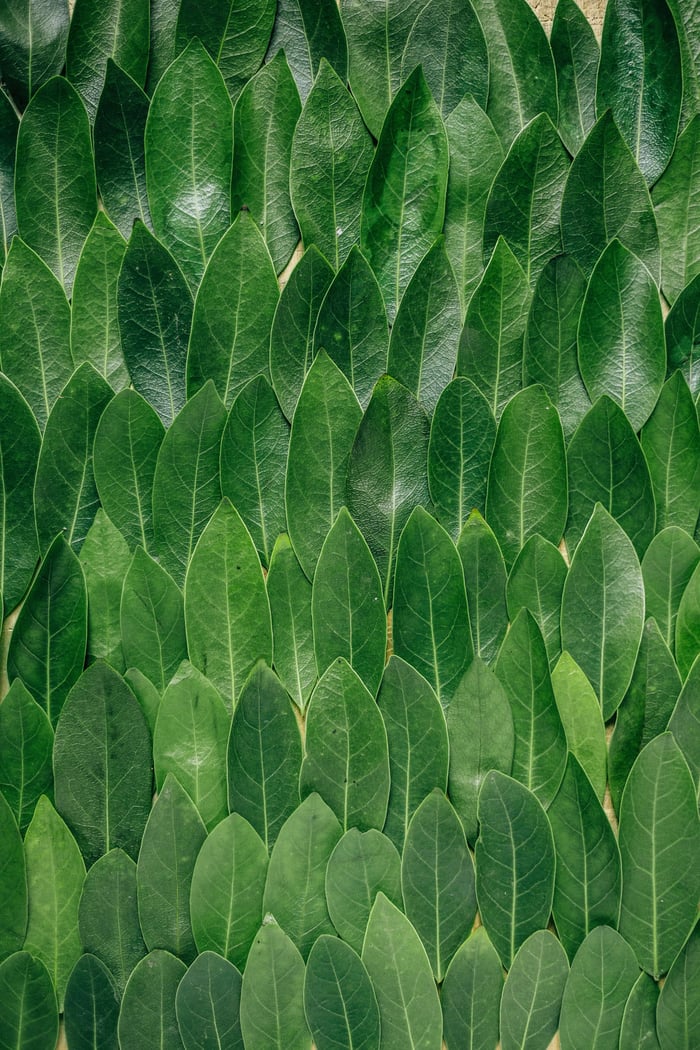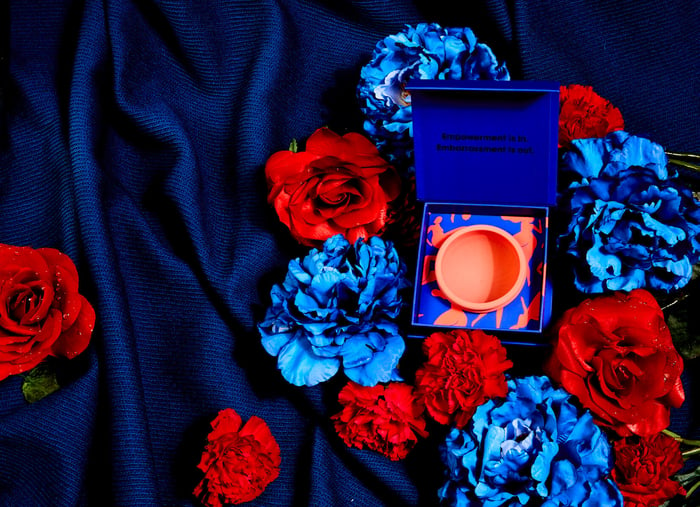If you’re a woman reading this, then you don’t need to be told that you period is a big deal--you can expect to get about 450 of them throughout the course of your life!
The fifth vital sign
The medical community has also begun to recognize the importance of women’s periods--specifically, that women’s periods serve as a “monthly report card,” as Lara Briden, ND puts it, and that the menstrual cycle is a predictor of a woman’s overall health.
Many women’s health experts have even begun viewing the menstrual cycle as the fifth vital sign --along with temperature, blood pressure, heart rate, and respiratory rate--measuring the body’s most basic functions and providing an indicator of an individual’s health and well-being.
A look at your cycle
Because menstrual health and overall health are inextricably linked, a painful period or irregular cycle is an important indicator of an imbalance within the body. To help you better understand your menstrual health, we’ll first discuss what a healthy cycle should look like, and then, your options for treating the symptoms and root causes of an irregular cycle.
A normal cycle involves three phases: the follicular phase, ovulation, and the luteal phase.
Follicular phase
The follicular phase begins on the first day of your period, which is day 1 of your cycle. During the early follicular phase, your body releases hormones that trigger the growth of follicles on your ovaries, each of which contains an egg. As these follicles grow, they release high levels of estrogen, which causes the uterine lining to thicken.
Ovulation
Ultimately, all but one of these follicles is reabsorbed by the ovary, and on day 14 of your cycle, the remaining follicle matures, bursts, and releases the egg: this is ovulation.
Luteal phase
Following ovulation, you enter the luteal phase of your cycle, during which the ruptured follicle transforms into the corpus luteum--a tiny miracle gland that secretes the hormone progesterone, which causes the uterine lining to thin.
Over the next week, the fallopian tubes help carry the egg toward the uterus. If a sperm joins with the egg, fertilization occurs. If no sperm arrives, the unfertilized egg breaks apart and estrogen and progesterone levels drop, causing the uterine lining to shed and exit the body along with the unfertilized egg, thus beginning your period (and your cycle) anew.
The hormonal dance
Now, before we get into treatment options for irregular cycles, it’s important to understand the beneficial roles that estrogen and progesterone play as mood enhancers.
Estrogen boosts your mood by increasing serotonin and dopamine, the neurotransmitters responsible for feelings of happiness, motivation, and pleasure. Progesterone is a calming hormone, responsible for balancing out the stimulation caused by estrogen secretion.
Because the interplay of these hormones not only regulates your mood, but controls the thickening and thinning of the uterine lining, their stasis is essential for a healthy and pain-free period.
Why herbs?
For thousands of years, women have been using herbal remedies to treat menstrual issues and support a healthy cycle. Today, as more women reject or come off pharmaceutical birth control options and seek out natural remedies for menstrual health and period repair, herbs have regained attention as a safe and natural option for regulating the menstrual cycle.
Menstrual issues and natural treatment options
Today, we’re going to discuss three common menstrual issues and discuss the herbal and supplemental treatments available to help manage them.
Premenstrual Syndrome (PMS)
Contrary to popular myth, PMS is not caused by the mere presence of rise of hormones around the time of your period. As you now know, estrogen and progesterone are actually both mood enhancers, not downers!
However, estrogen is stimulating, and can therefore create a withdrawal effect, whereby you feel the overstimulation produced by estrogen secretion at the start of your cycle, and subsequently, the low caused by a drop in serotonin and dopamine, when estrogen production falls. It is progesterone’s job to help smooth out the rises and dips in estrogen, but for this hormonal dance to be smooth, your body must release adequate amounts of each hormone.
Further, these hormones, even when in balance, are strong, so some “moodiness” is normal! Rather than viewing mood fluctuations as signs of a problem, start to think about how you can enhance progesterone production and detoxify estrogen, so that your body can become resilient and adaptable to these monthly hormonal fluctuations.
Magnesium
One of the main supplements you can use to help support progesterone production is magnesium. Magnesium’s benefits come from its ability to reduce inflammation and improve the health of your corpus luteum, your progesterone-secreting gland.
You can up your intake of magnesium by eating dark leafy greens and nuts; or you can take 300mg of magnesium glycinate daily.
Chasteberry
Chasteberry; chaste tree; vitex agnus-castus: there are the three common names for this miracle herb, which is regularly prescribed in Europe as an herbal treatment for PMS and other menstrual symptoms such as water retention, constipation, and breast tenderness Chasteberry supports progesterone production by regulating the production of prolactin, a hormone which inhibits ovulation and thus the formation of the corpus luteum.
It is recommended to take 200mg of chasteberry standardized extract first thing in the morning before breakfast. Stop taking it for five days from the start of your period, and then pick back up again.
Heavy blood loss
Over the course of your period, you should lose about 50 millilitres, or 3 tablespoons of blood and menstrual fluid. If you lose more than 80ml of blood per period, that is considered a very heavy flow, known as “menstrual flooding.”
Because estrogen causes the uterine lining to thicken, heavy periods are typically caused by too much estrogen in the body. One treatment option for relieving the symptom of significant blood loss, then, is to take herbs that help your body detoxify estrogen. Estrogen detoxification and stabilization will also help minimize PMS, as discussed above.
Iron
Iron is a critical supplement to take if you experience heavy periods and substantial blood loss.
You can consume iron by eating red meat, dried beans, and egg yolks. You can also take 15 to 50mg of iron in supplement form.
Diindolylmethane (DIM)
DIM is a phytonutrient found in cruciferous vegetables such as Brussels sprouts, broccoli, cauliflower, and cabbage that helps the body stabilize and detoxify estrogen.
You can eat your DIM, or take 200mg daily with food.
Turmeric
Turmeric is the bright yellow Ayurvedic herb used in many Asian dishes, and it also happens to be another great herb for detoxifying estrogen. Not only is turmeric anti-inflammatory, but it’s an anti-estrogenic food that supports liver function and helps detoxify excess estrogen from the body.
Turmeric can be taken every day, though relying solely on dietary ingestion of turmeric will not be sufficient to confer the medical benefits of this herb. Rather, choose a standardized extract or supplement, and dose according to the instructions on the bottle.
Painful cramping
Period pain, also known as primary dysmenorrhea, is caused by contractions of the uterine muscle. As the uterine lining starts to break down and shed during your period, it releases inflammatory prostaglandins, which when secreted in excess, cause pain.
Magnesium
The number one defense against painful periods is magnesium. Magnesium inhibits the formation of inflammatory prostaglandins, thus easing period pain.
For dosing throughout your cycle, follow the instructions above. In cases of extreme pain, you can double this dosage during the days of your period.
Fish oil
Fish oil contains omega-3 fatty acids, which help build series 3 prostaglandins. These prostaglandins balance out the inflammatory prostaglandins released by the uterine lining as it breaks down.
To relieve painful cramping, take 2,000mg of fish oil a day. It may take a few months to see results, but stick with it!
Zinc
One final line of defense against period cramps is zinc. This supplement is highly anti-inflammatory and thus reduces inflammation of the uterine lining, as well as improving blood circulation in the uterus.
Taking 30mg of zinc per day for a few days before your period has been shown to significantly reduce period pain.
Happy hormones, happy you!
Now that you’ve learned the basics of menstrual health and hormonal function, you can begin to look at your own cycle to assess its health and regularity. The tips above should help you recognize signs of estrogen dominance or progesterone deficiency, as well as give you safe and natural options for treating these issues with readily available herbs and supplements, so that you, too, can have a healthy cycle and pain-free period!
Written by: Sarah Jornsay-Silverberg





